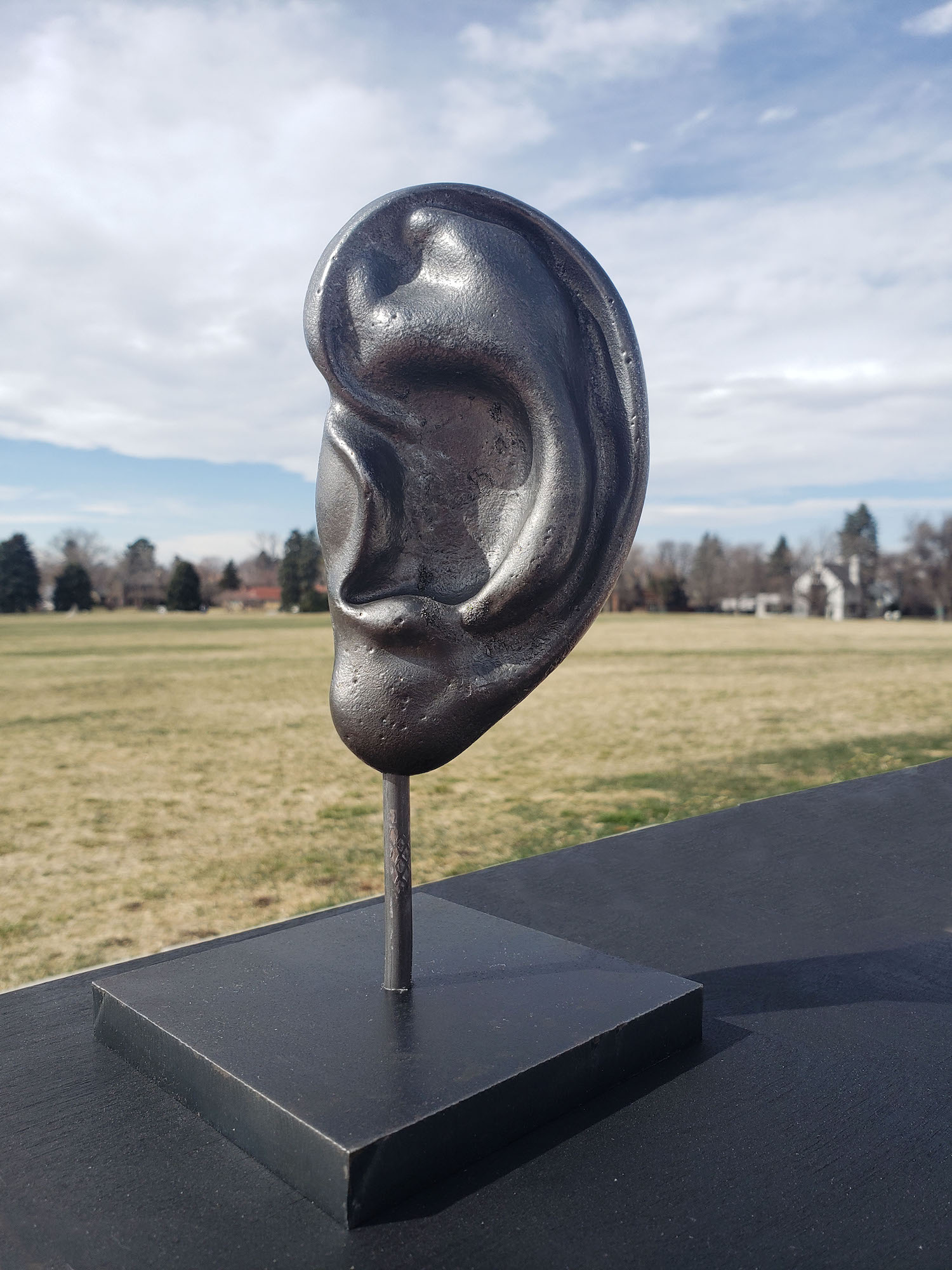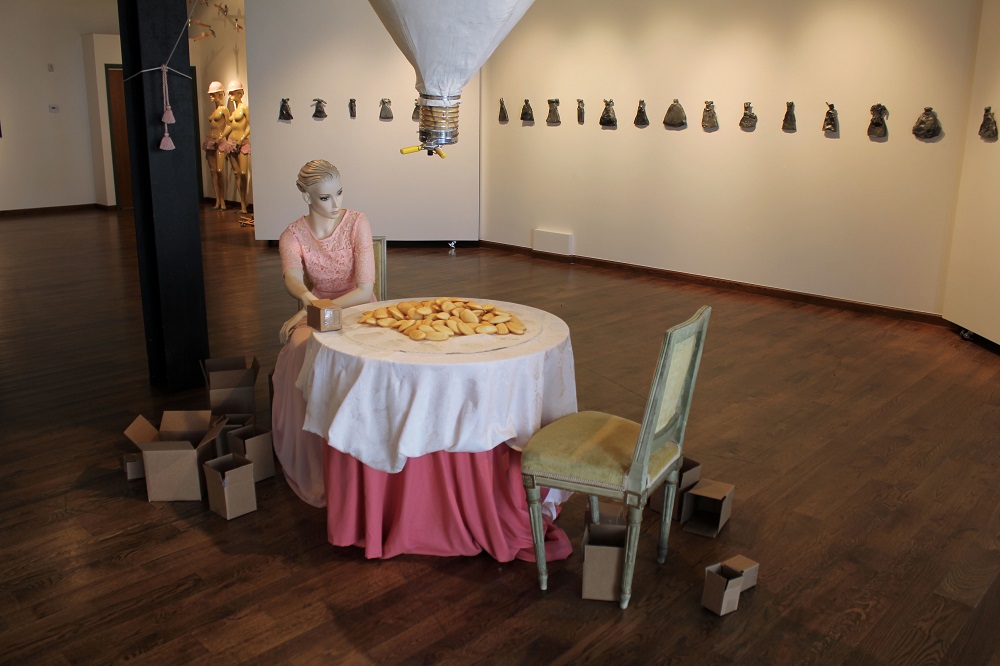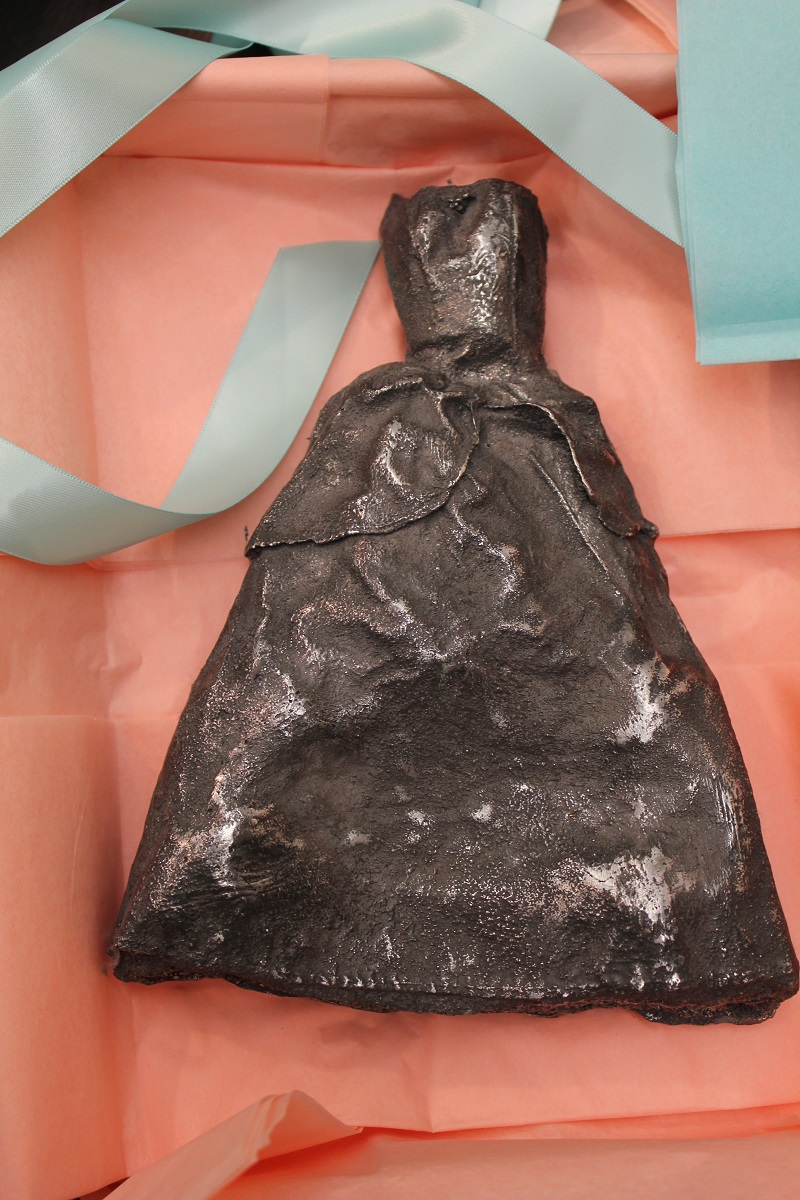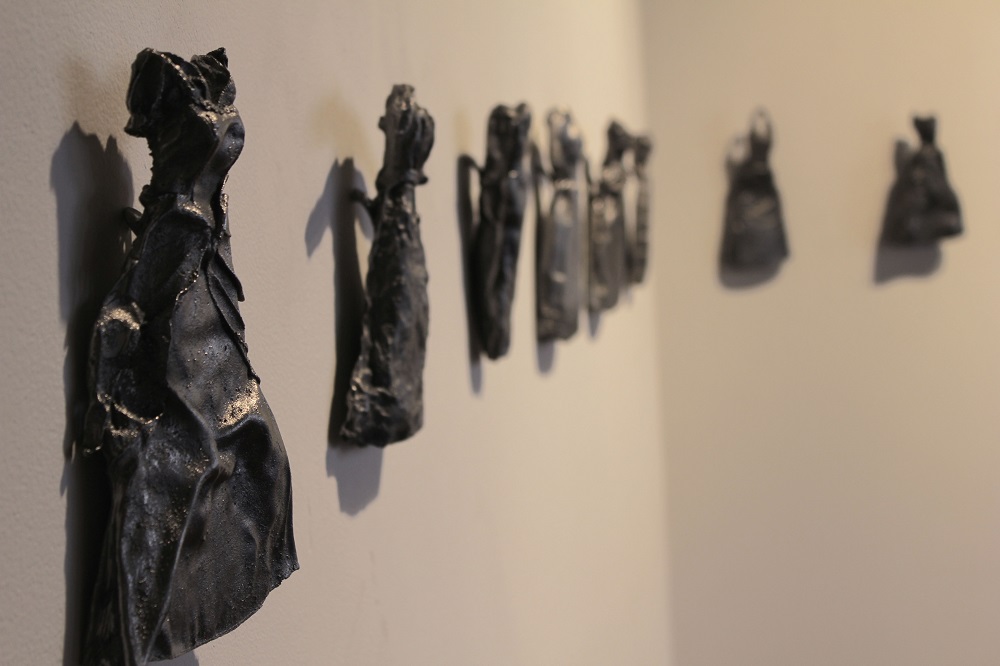Like a Rolling Stone: Installation Artist Laura Phelps Rogers '13 Thrives in Evolving Commercial Art Industry





Laura Phelps Rogers ‘13 has been in the art industry since 1976, first buying, making, and selling jewelry in the early 70s. Her fine art path meandered from historical fine art works and mid-century modern fine art pieces to contemporary art practice. Phelps Rogers returned to school after a life changing event with the intention of earning a degree in nursing. She started taking art classes while at the Community College of Denver, and by the time she matriculated to CU Denver, she found herself “caught up in art-making”. She switched degree paths to Transmedia and Sculpture at the College of Arts & Media (CAM).
As an installation artist, Phelps Rogers connects viewers and history with current topics. A significant portion of her work revolves around historic perceptions of women, where she contrasts those historical viewpoints with a contemporary conceptual lens. Phelps Rogers has exhibited widely, both regionally and nationally. Her work "Nipple Quilt" was displayed in the Fulginiti Pavilion at the Center for Bioethics and Humanities at the University of Colorado Anschutz Campus in 2012. In addition to frequently contributing to public art installations, Phelps Rogers is a part of the Artnauts collective, adding to her international exhibition history.
In 2018, Phelps Rogers opened fooLPRoof Contemporary Art Gallery in Denver, which features work in every medium from well-known artists while occasionally finding a spot for or coaching some lesser known or ambitious artists. Phelps Rogers says running the gallery and continuing to create compelling art while also giving other artists the attention they need in a retail gallery space is her biggest challenge. She feels each day should be approached with a fervor and as she describes it: waking up each day and living it as if it might be her last.
Phelps Rogers shares her thoughts on the value of art degree, what it’s like running a gallery as an artist and a businesswoman, and how the world of fine art is evolving.
What is something you’ve learned about the art industry after having been involved in it for over 40 years?
Art should be treated like a business. If you want to be successful at it and make a living from it, you have to treat this like a business. For instance, one thing artists today have to think about, especially in Denver, is that they can’t sell their art in galleries around the city for prices they did 10 or 20 years ago. Real estate values are driving a new economy, a shift in retail, and attracting newcomers from major metropolitan cities. Ten years ago, there were still a few affordable spaces; now there are not. The economy has changed and so should the business of art. Thankfully, there are several key non-profit spaces with supporters to help mitigate these dramatic changes.
There is the topic of Art for Art’s sake—a necessary component of contemporary practice but, a practice that either has to be self-funded or supported in the confines of non-profit spaces. Is the mindset of art for art’s sake lazy? Why can’t you create art for art’s sake and also figure out how to make a living from your art? FooLPRoof tries to keep its feet in both sides. I think creating market-able art is something young people crave, as the notion of supporting themselves by doing something they love. The reality is that people like to consume. That’s what we are; we’re a consumer-based culture. I don’t see that changing any time soon. I try to coach artists to create meaningful and conceptual works while also making them think about sales, consider overhead costs and so on. How to keep and build a sustainable practice, I believe, is important.
On social media - A downside of social media is that people are forced to look at and process so many images in any given day that they have begun to devalue an image. And they can take any image and print it so fast now with many different sources. So, if we’re not careful, we could see galleries become more and more obsolete, the way bookstores have gone. This phenomena with social media and self-representation, in fact, may contribute to there being less and less commercially viable visual spaces in the future.
(1/3)
(2/3)
(3/3)
What is your curation process like? Do you seek artists out or do they approach you?
Both, I invite artists and I allow artists I am not familiar with to apply. As an installation artist, I think of the gallery space as a whole. I can’t just think about individual pieces of work or just about one artist; I think about how the pieces of artwork work together and how people feel when they enter and while they’re in the space. Installation artists create an environment, and people who come into that environment should be elevated by the experience or feel something—if you do it correctly. When people come into fooLPRoof Gallery, they usually pause and their body language indicates they opening up. I have actually observed this as people enter the space.
Shortly after we had opened back up after the COVID shut down, I had a particular artist’s paintings arranged in a U-shape right at the entrance of the gallery, in such a way that people were surrounded by them as they walked through the door. This particular artist uses really powerful, heavily pigmented colors in his paintings, which makes them a little dark. Plus, the topics of the paintings were really heavy. I could see when people walked in the gallery, it was almost like they were putting on blinders because of the shock of being confronted with those paintings right away. I had to keep re-arranging that show, and eventually arranged those particular paintings all together in a grid. When they were arranged this way, they were received very positively; people loved them.
A lot of times in museums, curators will arrange pieces by size and shape, but being an installation artist, I take a much more organic approach. The works have to look good with one another. I have used that as the impetus for continuing to create new work, designing new works or installations, to fill the gaps to make work flow within exhibitions. I paint now and I haven’t painted since the 70s.
A big difference between nonprofit galleries and a commercial gallery, like mine, is that commercial galleries are a bit more dynamic. Meaning, in nonprofit galleries the work stays up until the show is over, but in a commercial space, pieces can sell, creating voids in the exhibition with works coming and going. That’s one of my main challenges: Filling holes with things that fit the theme of the current exhibition while also keeping the exhibition looking good with the existing pieces.
How have you found the dynamic of managing other artists in your gallery?
It’s kind of like having kids, in the sense that each artist, like each child a parent has, has unique needs. With the dynamics of a commercial art space, sometimes I have to go back to artists whose pieces have sold and ask them to create something to fill a hole. Some artists don’t work well under pressure like that, while others embrace that pressure as an opportunity to create, and potentially sell, another piece. So the question is, how do you keep this artist happy who doesn’t create well under pressure, and this artist who wants to show their work on Instagram, and this artist who’s trying to get into a museum collection, and this artist who’s trying to sell to commercial designers? How do I meet all these artists’ needs while at the same time keeping the gallery together visually and commercially? It requires me to juggle many different priorities. We are fortunate to have many talented contemporary artists to work with.
The gallery generally has 20-30 artists under its wing at any given time. The current exhibition The Natural World and Other Wonders has 18 artists (eight of whom teach at universities, seven who are featured in museum collections, two who recently exhibited at the Arvada Center, several international artists and the remainder of whom have advanced practices widely exhibited.) Currently the gallery has an additional 10 or so artists with works on hand who are not in the current exhibition. Four additional artists have either recently been accepted or are in the application process. One of these artists is an augmented reality painter.
What is the value of having a degree in the arts?
Having a visual arts degree and being an installation artist helps me see the potential in other people’s work that they may not see. People with an art degree are much better at receiving criticism and understanding curatorial decisions and goals. It seems artists without a degree are challenged by curatorial needs and limitations or criticism. Possibly social media also plays a role in that dynamic. In fact, fooLPRoof only accepts professional artists. Generally, an art degree is a part of that process of becoming a professional. You know teachers are famous for beating you down and lifting you up. That process, the critical process and the criticism you receive at art school is one of the single best things you get as part of a BFA and MFA and of great value. Making a decision to be a professional artist is a commitment. For me to take you seriously and others to take you seriously, you need to take yourself seriously.
What is next for you and your gallery?
I think in order for any business to succeed, one has to look towards the future. I think to stay in business 40 years you must be a rolling stone, like Bob Dylan says. I’m going to have to have a fine art gallery in the metaverse. I want to be one of the first people to take fine art into the NFT sector. Toward this end, I’ve taken some extension course work through Otis College on NFTs. Not only am I educating myself on NFTs, but also the cryptocurrency world, and the people who are buying NFTs. I am learning that it’s an entirely different art market than the art market/world we are all familiar with. Many collectors in that sector do not consumes physical works. Next on my agenda: A M.P.S. in UI/UX which is a direction for both personal growth and leading the gallery into the future.
Written by Megan Briggs-Pintel, CAM Communications